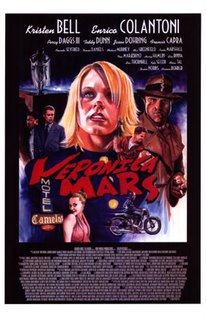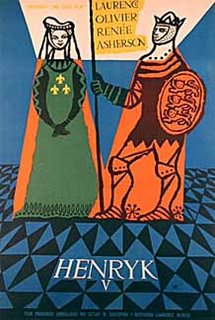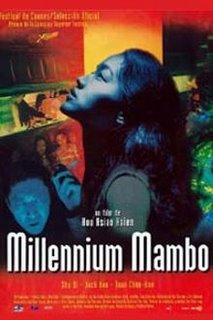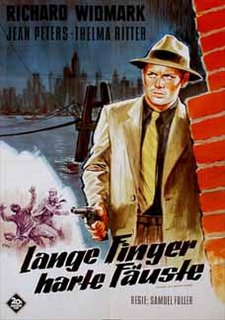 Been watching a lot of TV series recently. I'm almost finished with Veronica Mars, which is a very good, Buffy meets film noir show with an interesting mix of bubbly cuteness and horrible tragic crime and perversion. I also bought and purchased seasons four and five of The Simpsons, inspired by the book Planet Simpson by Chris Turner, which is one of the best cultural studies books I've ever read. Turner charts and analyzes seemingly the whole of pop culture from punk and grunge to American independent film, the Republican Revolution, the rise of the SUV, the internet and the multi-national corporation as seen through the lens of the best television show ever.
Been watching a lot of TV series recently. I'm almost finished with Veronica Mars, which is a very good, Buffy meets film noir show with an interesting mix of bubbly cuteness and horrible tragic crime and perversion. I also bought and purchased seasons four and five of The Simpsons, inspired by the book Planet Simpson by Chris Turner, which is one of the best cultural studies books I've ever read. Turner charts and analyzes seemingly the whole of pop culture from punk and grunge to American independent film, the Republican Revolution, the rise of the SUV, the internet and the multi-national corporation as seen through the lens of the best television show ever.Snakes On A Plane - The next step in the information age's destruction of modernity is this intentionally unintentionally funny animal action movie pastiche. The end result of every genre is self-conscious referentiality, and SOAP is to the animal action genre what Touch Of Evil is to film noir: the reducto ad absurdum of the genre, it's distillation to its most essential elements and taken way over the top. The difference is that Touch Of Evil actually has a point to it (a lot of points, actually) while with SOAP the absurdum is the end in itself. While that makes for an entertaining night at the movies, especially with the benefit of some refreshing beverages, it doesn't exactly make it a great film. Or maybe it does, that's post-modernity for you.
 Ivan The Terrible Part 2 - The second part of Sergei Eisenstein's trilogy about the first great Russian Tsar ended up being the last as Stalin thought Ivan's use of the secret police to destroy his enemies was a little to familiar. This film continues the radically bizarre staging of the first (described in an earlier roundup). Ivan returns at the behest of the people to Moscow, but finds the local gentry is still trying to kill him. His wife's been killed, his best friend and general ran off to join with the Poles and his aunt wants him dead so her son, an idiot can be Tsar. No wonder he's depressed. He tries to make friend's with a priest, but even he ends up out to get him. The highly stylized mise-en-scène and acting is back from the first film, though 2/3 of the was through the film changes from black and white to a very strange color (imdb calls it Bi-Color, "an early experimental form of color film which has only blue and red shades, producing a vividly abstract effect) for a long party sequence, which only makes things weirder. The film wasn't released until 1958, long after both Stalin and Eisenstein were dead.
Ivan The Terrible Part 2 - The second part of Sergei Eisenstein's trilogy about the first great Russian Tsar ended up being the last as Stalin thought Ivan's use of the secret police to destroy his enemies was a little to familiar. This film continues the radically bizarre staging of the first (described in an earlier roundup). Ivan returns at the behest of the people to Moscow, but finds the local gentry is still trying to kill him. His wife's been killed, his best friend and general ran off to join with the Poles and his aunt wants him dead so her son, an idiot can be Tsar. No wonder he's depressed. He tries to make friend's with a priest, but even he ends up out to get him. The highly stylized mise-en-scène and acting is back from the first film, though 2/3 of the was through the film changes from black and white to a very strange color (imdb calls it Bi-Color, "an early experimental form of color film which has only blue and red shades, producing a vividly abstract effect) for a long party sequence, which only makes things weirder. The film wasn't released until 1958, long after both Stalin and Eisenstein were dead.Talladega Nights - A perfectly entertaining Will Farrell NASCAR comedy that's pretty much exactly what you expect it to be. Sasha Baron Cohen, John C. Reilly and Gary Cole are the competent comic foils and Amy Adams is in it far too little as a hot redhead. It's funny, but not as brilliant as Farrell's Anchorman or any of the other great 00s comedies (The 40-year Old Virgin, Dodgeball, etc).
 Henry V - Laurence Olivier's version of Shakespeare's play has an interesting idea, the film starts in a replica of the Globe Theatre and eventually expands to a broader, but still stagey, landscape. It's also shot in a vibrant Technicolor. Other than that, I can't say I liked it. The staginess extends to the performances, which are that brand of Shakespeare that are more recitation than actual performance. Especially Olivier, who I've always liked and, of course, has an unmatched reputation as an actor. I found him unbearable. Henry V is supposed to be a fiery leader of men, with his experience slumming with falstaff putting him in touch with the common man. With Olivier, he seems like a rich kid who had to memorize this speech for English class and has no idea what it means. Give me Kenneth Branagh's version any time. As obnoxious a person he may be, his Henry V (#2, 1989) at least has some life to it.
Henry V - Laurence Olivier's version of Shakespeare's play has an interesting idea, the film starts in a replica of the Globe Theatre and eventually expands to a broader, but still stagey, landscape. It's also shot in a vibrant Technicolor. Other than that, I can't say I liked it. The staginess extends to the performances, which are that brand of Shakespeare that are more recitation than actual performance. Especially Olivier, who I've always liked and, of course, has an unmatched reputation as an actor. I found him unbearable. Henry V is supposed to be a fiery leader of men, with his experience slumming with falstaff putting him in touch with the common man. With Olivier, he seems like a rich kid who had to memorize this speech for English class and has no idea what it means. Give me Kenneth Branagh's version any time. As obnoxious a person he may be, his Henry V (#2, 1989) at least has some life to it.The Three Musketeers - This probably isn't the worst Three Musketeers film ever, but it certainly ain't good. It gets off to a nice start, with Gene Kelly as D'Artagnan bouncing around in a fun opening action scene. But the middle of the film is long and dull with hardly any action. It does follow the book surprisingly closely, except it seems to have actually cut out a number of action sequences. The big cast includes Lana Turner, Angela Lansbury, Keenan Wynn and Vincent Price, of all people, as Cardinal Richelieu.
Safe Men - Mediocre Ishtar wanna-be with a great cast. Steve Zahn and Sam Rockwell are bad singers mistaken for safecrackers Mark Ruffalo and someone else by Paul Giamatti and his gangster boss, Michael Lerner. They're forced by the gangsters to crack safes, despite their total inability to do so. Along the way, one of them falls in love with a girl and the other becomes reconciled with his father, or something. The #53 film of 1998.
Meet John Doe - Barbara Stanwyck plays a reporter who, to save herself from getting fired, invents a suicide letter from a Depression victim who says he'll jump off a building to protest society's evils. The letter becomes a sensation and she and her newspaper hire Gary Cooper to pretend to be the guy who wrote the letter. He becomes the leader of a social movement of the disaffected masses. When the owner of the paper conspires to use Cooper's popularity as a tool to increase his own political power, Cooper admits the ruse and the movement fails. It's lesser Capra, not as moving as Mr. Smith or as brilliant as It's A Wonderful Life, and it suffers most of all from having the bland Cooper in the lead instead of the great Jimmy Stewart. Like most Capra films, it's a lot darker than it's reputation, but the politics is much more obvious and heavy-handed than in those other films.
 La Strada - Federico Fellini's first big international hit stars his wife, the great Giulietta Masina as an innocent (with a capital 'I') waif who gets sold by her mom to be a wife for a traveling strongman (Anthony Quinn). The strongman's a brute (pun intended) who beats his wife and cheats on her. They meet Richard Baseheart (looking eerily like Bobby Flay and nothing like I remember him looking in He Walked By Night), a tightrope walker who loves to taunt Quinn and suggests to Masina that Quinn may actually love her. If this all sounds familiar, it's because Woody Allen made the same movie and called it Sweet And Lowdown. The difference is that in Allen's film, the strongman is an artist, a brilliant guitar player played by Sean Penn as a sympathetic misanthropist with major inferiority issues with the great gypsy guitarist Django Reinhardt. Quinn's strongman, on the other hand, is no artist and is totally lacking in charm or sympathy. While this makes us feel worse for Masina, she's such a terrific actress that we don't really need any more reason to sympathize with her. What it does, though, is make us care a lot less for the plight Quinn finds himself in once Masina's actually left him. Anyway, it's still a great film, shot beautifully and with great performances, especially by Masina, who's almost as brilliant as she is in Nights Of Cabiria, made a few years later.
La Strada - Federico Fellini's first big international hit stars his wife, the great Giulietta Masina as an innocent (with a capital 'I') waif who gets sold by her mom to be a wife for a traveling strongman (Anthony Quinn). The strongman's a brute (pun intended) who beats his wife and cheats on her. They meet Richard Baseheart (looking eerily like Bobby Flay and nothing like I remember him looking in He Walked By Night), a tightrope walker who loves to taunt Quinn and suggests to Masina that Quinn may actually love her. If this all sounds familiar, it's because Woody Allen made the same movie and called it Sweet And Lowdown. The difference is that in Allen's film, the strongman is an artist, a brilliant guitar player played by Sean Penn as a sympathetic misanthropist with major inferiority issues with the great gypsy guitarist Django Reinhardt. Quinn's strongman, on the other hand, is no artist and is totally lacking in charm or sympathy. While this makes us feel worse for Masina, she's such a terrific actress that we don't really need any more reason to sympathize with her. What it does, though, is make us care a lot less for the plight Quinn finds himself in once Masina's actually left him. Anyway, it's still a great film, shot beautifully and with great performances, especially by Masina, who's almost as brilliant as she is in Nights Of Cabiria, made a few years later.Beauty And The Beast - Writer, painter, poet, director Jean Cocteau's surrealist version of the fairy tale abut the young woman who falls in love with the beast with a heart of gold. It's got a certain low-fi magical beauty to it, disembodied arms holding candlesticks and such that gives the film a sense of poetry. And the story itself is a hotbed of possible interpretations and dissertations, especially given who the Beast turns into at the end of the film. But honestly, I was a little bored by it all. Maybe it was just my mood, but I was far from enchanted. It all seemed far too amateurish for me, like a dilettante making a film with his friends and a shoestring budget.
The Sands Of Iwo Jima - This quite generic WW2 movie stars John Wayne as the leader of the squad that famously raised the flag on Mt. Suribachi. The movie starts with the new recruits and follows the way Wayne trains them into an effective fighting force. The requisite plot elements all line up: the resentful soldier who doesn't like how mean Wayne is, the tragic death of a squad member, Wayne proving his heroism in battle in front of his men, along with lots of homoerotic "wrestling" from two blond, midwestern "brothers". The action sequences are quite good, with some seamless interpolations of stock footage, but the fights just aren't enough of the film. When there's no action, the film's just a clichéfest.
 Millenium Mambo - My second Hou Hsiao-hsien film (he also did Café Lumière, #3, 2003), and I'm on the verge of just getting everyone I can get if they keep being this good. Hou's reputation is for Ozu-like slowness and lack of movement in his films, and CL certainly followed that profile with it's total lack of camera movement. This film, however, is nothing but camera movement. There's still no close-ups or any kind of traditional editing, but the camera is still in constant motion (much like it is in Noah Baumbach's classic Kicking And Screaming (#4, 1995), just out on a very nice Criterion DVD). It's befitting, if a little obvious, that this constant motion is indicative of the chaotic nature of the film's heroine's life. Qi Shu plays a young woman trying to escape her drug-using, quite jealous boyfriend. She leaves and returns to him a few times, tries to get a decent job, does drugs herself,. and goes to a film festival in snowy Japan. It's a simple, even generic story elevated by the brilliance and artistry of the direction. The #2 film of 2001.
Millenium Mambo - My second Hou Hsiao-hsien film (he also did Café Lumière, #3, 2003), and I'm on the verge of just getting everyone I can get if they keep being this good. Hou's reputation is for Ozu-like slowness and lack of movement in his films, and CL certainly followed that profile with it's total lack of camera movement. This film, however, is nothing but camera movement. There's still no close-ups or any kind of traditional editing, but the camera is still in constant motion (much like it is in Noah Baumbach's classic Kicking And Screaming (#4, 1995), just out on a very nice Criterion DVD). It's befitting, if a little obvious, that this constant motion is indicative of the chaotic nature of the film's heroine's life. Qi Shu plays a young woman trying to escape her drug-using, quite jealous boyfriend. She leaves and returns to him a few times, tries to get a decent job, does drugs herself,. and goes to a film festival in snowy Japan. It's a simple, even generic story elevated by the brilliance and artistry of the direction. The #2 film of 2001.What Time Is It There? - The first Tsai Ming-liang film I've seen is one of the strangest movies I've seen in awhile. A young Taiwanese street-vending watch salesman sells his watch to a woman on her way to Paris. He becomes a little obsessed, changing all the clocks he can find to Paris time, while she has a very weird vacation in France, including some events that seem somehow linked to what the guy's doing in Taiwan. It's a slow movie, with a static camera and little in the way of traditional editing (Tsai's part of the same Ozu revival as Hou and Jim Jarmusch, among others), and takes awhile to get going, but once it does, there are some absolutely hilarious moments. The #7 film of 2001.
Blackboard Jungle - The film that launched rock and roll (Rock Around The Clock plays over the opening credits) is a prototypical idealistic teacher at an inner-city high school movie. Glenn Ford plays the teacher, trying to tame a group of juvenile delinquents led by Sidney Poitier and Vic Morrow. The delinquents talk a crazy 50s teenager lingo that Ford struggles to understand. He tries a variety of ways to get through to the kids, while fending of muggings, random acts of destruction and insinuating phone calls and letters to his wife. Directed by Richard Brooks, who did Cat On A Hot Tin Roof, Looking For Mr. Goodbar and a god awful version of The Brothers Karamazov starring William Shatner.
 Pickup On South Street - Classic Samuel Fuller film noir in which Richard Widmark lays a pickpocket who accidently picks up some microfilm being stolen by communist agents. The FBI had the agent under surveillance, and with the help of Thelma Ritter's professional snitch, they soon track Widmark down. Like all Fuller's films, this one is vibrant and direct and emotional, though it's more restrained than, say, Naked Kiss or Shock Corridor. It's the most cohesive, realistic world I've yet seen from Fuller. Widmark and Ritter are terrific, though Jean Peters is weak in the role of the pickpocketed courier.
Pickup On South Street - Classic Samuel Fuller film noir in which Richard Widmark lays a pickpocket who accidently picks up some microfilm being stolen by communist agents. The FBI had the agent under surveillance, and with the help of Thelma Ritter's professional snitch, they soon track Widmark down. Like all Fuller's films, this one is vibrant and direct and emotional, though it's more restrained than, say, Naked Kiss or Shock Corridor. It's the most cohesive, realistic world I've yet seen from Fuller. Widmark and Ritter are terrific, though Jean Peters is weak in the role of the pickpocketed courier.Coffee And Cigarettes - A collection of short films made by Jim Jarmusch over several years with a variety of famous people sitting and talking over, well, coffee and cigarettes. Some of the shorts are great, some are boring, but I didn't think any of them were particularly terrible. I especially liked: Jack and Meg White and Jack's Tesla coil, Roberto Benigni and Steven Wright, Steve Coogan and Alfredo Molina, Cate Blanchet and herself, GZA, RZA and Bill Murray and especially Tom Waits and Iggy Pop.
Scarface - The original Howard Hawks film, from 1932, is near impossible to separate from the genre it created and the Brian DePalma flm that's every gangsta rapper and frat boy's favorite bulletfest. Paul Muni plays Tony, the psychotic gangster to shoots his way to the top of the bootlegging racket. His sister p[roves to be his downfall as she tries to escape his "overprotectiveness". The great Ben Hecht (The Front Page, Twentieth Century, Gunga Din, Notorious, Kiss Of Death, and a whole lot of uncredited work on some of the best films of the 40s and 50s) wrote the screenplay.
The Protector - Tony Jaa's follow-up to Ong-Bak ( #6, 2003) had over 20 minutes of it cut out for it's US release, and what's left is an inane, non-stop action movie about a young man out to avenge his father's murder and free his elephants from the Australian-Thai gangsters that have kidnapped them. "You killed my father, and STOLE MY ELEPHANT!!" is typical of the dialogue. But no one's watching a Jaa movie for dialogue, or character or plot or any silly thing like that. Instead, it's all about the action sequences, which are as amazing as you'd expect. There's a silly nod to X-Gamers, a humorous boat chase, a never-ending series of bone-crunching bone-crunching and one of the greatest sequences in the whole history of martial arts movies: a four-minute plus single-take Steadicam shot of Jaa beating the hell out of an endless supply of bad guys while ascending a giant spiral staircase. One of the coolest, and most difficult, things I think I've ever seen on film. The #22 film of 2005.
 The Conformist - Bernardo Bertolucci's breakthrough film stars Jean-Louis Trintignant (Three Colors: Red) as a pre-WW2 young man so traumatized by a childhood brush with a homosexual chauffeur that he marries a dumb bourgeoise and becomes a fascist assassin so that people will think he's normal. When he's sent on his honeymoon to Paris, his superiors order him to kill his old professor, an anti-fascist communist exile. He meets the professor and falls for his wife, played by the very beautiful Dominique Sanda, and so has to decide if he's going to kill them anyway. If this all sounds vaguely silly to you, that's because it is. But still, the film is beautifully shot by Vittorio Storaro, who went on to be the cinematographer for Apocalypse Now, Reds, Ladyhawke, and Ishtar. The #5 film of 1970.
The Conformist - Bernardo Bertolucci's breakthrough film stars Jean-Louis Trintignant (Three Colors: Red) as a pre-WW2 young man so traumatized by a childhood brush with a homosexual chauffeur that he marries a dumb bourgeoise and becomes a fascist assassin so that people will think he's normal. When he's sent on his honeymoon to Paris, his superiors order him to kill his old professor, an anti-fascist communist exile. He meets the professor and falls for his wife, played by the very beautiful Dominique Sanda, and so has to decide if he's going to kill them anyway. If this all sounds vaguely silly to you, that's because it is. But still, the film is beautifully shot by Vittorio Storaro, who went on to be the cinematographer for Apocalypse Now, Reds, Ladyhawke, and Ishtar. The #5 film of 1970.